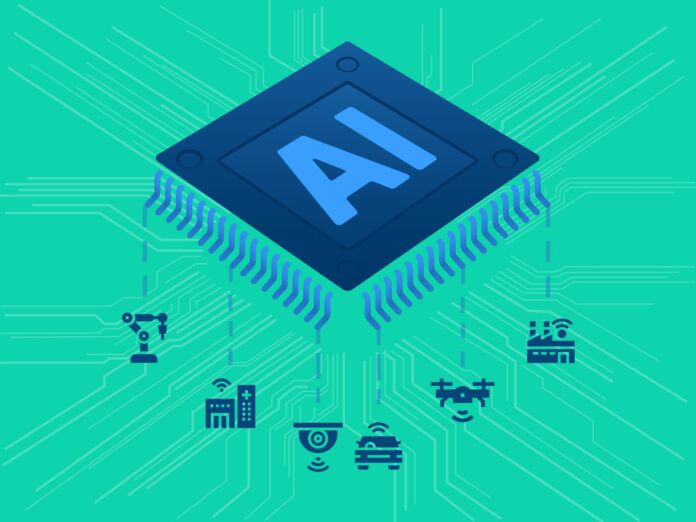
Ambient Scientific – November 5, 2024\
Collected at: https://www.iotforall.com/pushing-ai-to-the-edge
In an era where AI workloads are increasingly dominated by large-scale models like LLMs, Generative AI, and Transformers, it’s essential to ask hard questions about the future we’re building.
As these models grow in complexity, our reliance on AI intensifies, raising concerns about the impact on human creativity and independence. Are we becoming too dependent on AI to the point where it dictates our thoughts and decisions?
Key Questions for the Future of AI
Before embracing AI solutions without question, consider these critical factors:
- Data Corpus: What is the data source used to train these massive models? How reliable and relevant is it?
- Model Size: Is it wise to use large pre-trained models for custom workloads, or are there more efficient alternatives?
- Algorithm Efficiency: Are the current algorithms capable of achieving our desired results?
- Hardware Availability: Do we have the necessary hardware to run these workloads, and at what cost?
- Energy Efficiency: Are the algorithms and hardware optimized for energy efficiency?
These questions are not just theoretical; they are practical concerns that need addressing as AI continues to evolve.
The Power of Edge AI
Despite these challenges, there are ways to handle many use cases effectively at the edge, provided one has reliable data and the ability to optimize algorithms. Neural networks and deep learning algorithms, while complex, offer customization opportunities that can yield the desired results. Neural networks have never been the bottleneck in AI development.
Today, custom algorithms are rare in implementations, often due to a lack of understanding or the convenience of using pre-trained models. However, when working with edge or micro-edge devices, generally available models are often too large and resource-intensive.
This has led to a growing belief that edge devices are not suitable for running AI models—an opinion that is solidifying among AI developers.
But this belief is not the whole story. With a deep understanding of algorithms and access to subject matter experts, it’s possible to optimize algorithms to the point where a computer vision model can run effectively on a device with minimal memory.
Other AI workloads, such as those related to speech, sound, or sensor fusion, are even less complex and more manageable.
Why Choose Edge AI?
Edge AI offers several advantages that make it a compelling choice:
- Low Latency: Edge workloads provide faster turnaround times, offering high efficiency and reduced latency.
- Enhanced Privacy and Security: Data stays on your device unless you choose to transmit it, ensuring greater privacy.
- High Accuracy: Edge models can achieve accuracy levels comparable to larger models, if not better.
- Energy Efficiency: Both AI models and hardware are optimized for low power consumption, making edge solutions more sustainable.
- Complete Control: You have full control over the data, pipeline, and results, reducing debugging efforts and lowering the cost of ownership.
- No Hallucinations: By controlling the training data and model parameters, you can prevent AI hallucinations, ensuring your model stays grounded in reality.
Steps to Effective Edge AI Model Building
To successfully develop AI models for edge devices, consider the following:
- Mindset: Be determined to develop solutions for edge devices, ensuring that your use case supports this approach.
- Data Collection: Gather real-time data that closely represents the target population.
- Data Preprocessing: Use tools to clean the data thoroughly, enabling smooth feature extraction.
- Feature Selection: Work with subject matter experts or utilize tools to identify optimal features, ensuring that your model is effective.
- Custom Algorithms: Gain a deep understanding of algorithm flow to enable customization and optimize network convergence on limited data.
- Model Design: Make informed decisions about network size based on scientific understanding and specific needs.
- Comprehensive Testing: Test your model rigorously, focusing on sensitivity, specificity, and F1-score, rather than just accuracy.
Deploying AI Models on Edge Devices
With the right tools, deploying and testing AI models on edge devices can be done quickly and efficiently. Ambient Scientific offers a comprehensive custom AI model training toolchain optimized for our hardware. Our tools also enable real-time data capture, quick model training, testing, and deployment.
Edge AI is not just a viable option; it’s a powerful solution for achieving efficient, secure, and accurate AI workloads. By understanding and optimizing algorithms, and utilizing the right tools, we can overcome the challenges posed by large-scale AI models and unlock the full potential of edge computing.

Leave a Reply